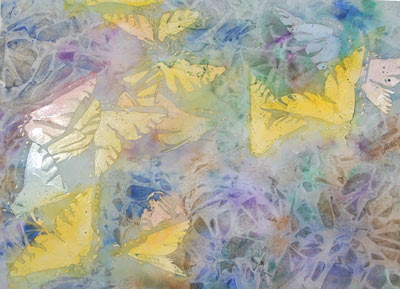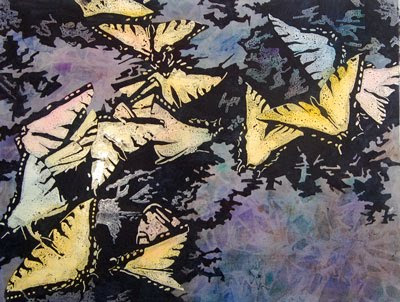
So here is the result of the plastic wrap. . . pretty nifty! And, the bonus benefit is that the technique can be completed more quickly than the careful layers I built up in the first version.
Now, I'm not saying that carefully painted "random" shapes aren't fun . . . but truly, there is a benefit in regard to the paper's surface. I had so many thin layers of paint on the previous painting that when I got to the end, I was having difficulty keeping a crisp edge on some of the darkest ares. The paper sizing was no longer effective, and feathers and bleeds were creeping into completed sections every time I applied fresh, dark color. So, reaching this level of texture with only a single application of pigment and water was very helpful in the long run.
I next applied one layer of a neutral tone over the plastic wrap effects to unify the patterns and then tackled the difficult section: evenly applying a mixed black throughout the painting.

The darkest design shapes hold the composition together, I think. Here you can see the butterflies still covered in their masking fluid, surrounded by dark, velvety passages.
I mixed my black from Permanent Alizarin Crimson and Pthalo Green. It works wonderfully as a dark staining color, but it also tends to shift from green to purple if I don't have the proper balance of pigments in the mix. When dry, I went back over the dark areas once more, and added a touch of Cobalt Blue to the mix to even out the color shifts.
I had applied some masking fluid to areas that were wholly contained within the largest dark areas to preserve them, but the outer edges of all the convoluted shapes were painted freehand. I had to work quickly, and always stay ahead of the wet edge of paint to avoid obvious brushstrokes. Keeping these shapes sharp and flat-toned was critical to my concept in this painting.





